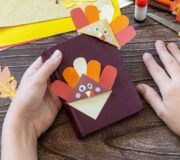Mardi Gras Math Activities: Topical Math [2]
Mardi Gras, French for “Fat Tuesday”, is a cornerstone of tradition in New Orleans, Louisiana, as well as a time to feast. It is a call to arms to gorge on delicious pancakes, so bring on the Mardi Gras Math activities!
Nothing quite links math back to the real world quite like the real world, and linking special celebrations around the world increases excitement and engagement among young learners. This remains both exceptionally true and important. We do however have a small amendment,…
Nothing quite links math back to the real world quite like the real world, except pancakes
Food has a special place in the heart of both young and old – and the stomach is a direct route to engagement in schools. In schools, the stomach is king.
Topical math can be your superweapon, and all through February and March, we will share math activities that you can link to calendar-based topical events to up the fun in your math lessons – look out for our posts on Science Week, St.Patrick’s Day, and Easter/Lent.
Many of the topics can be linked to wider learning and, in some cases (World Book Day – honestly!), literacy across the curriculum.
If you can’t wait for all these topical math activities to introduce context and more purpose into your lessons, here’s a free resource of Math investigations and problems that wraps them all up together.
If topical math is your super weapon, then pancakes are your smart bomb
With this in mind, below is a list of Mardi Gras-based math activities for you to use in your classroom this week. Happy hungering!
Mardi Gras activity 1
Ingestion Investigations
Read the following information to help you answer question 1:
A pancake house made 264 pancakes on Mardi Gras. Jack’s family ate 2.5 times as many pancakes as Lara’s family. Ali’s family ate 1/8 of the total number of pancakes made. Lara’s family ate 2/3 of the amount that Ali’s family ate.
Use these clues to work out how to answer question 2:
• Person 1 ate three times as many pancakes as person 3.
• Person 2 ate the same number of pancakes as person 1.
• Person 3 ate 2 fewer pancakes than person 5.
• Person 4 ate 2 more pancakes than person 5.
• Person 5 ate 5 pancakes.
Questions
- How many pancakes did Jack’s family eat?
- How many pancakes did each of the five people in Ali’s family eat?
Mardi Gras activity 2
Pancake on your head race
Ask your students to walk across the playground – or alternatively the classroom – with a pancake on their head. Make them walk quite quickly. Each time they drop the pancake they must measure the distance from where it fell to the start. Each time they complete the distance add another pancake to the stack.
Extension task
Ask your students to work out how many times they would need to walk across the area without dropping the pancake, or work out the average distance walked before dropping the pancake for the whole class.
Mardi Gras activity 3
Billy wants to have 2 sauces on his pancakes. Use the information below to investigate the different combinations of 2 sauces he could have:
A Pancake House offers 6 pancake sauces:
• Vanilla
• Strawberry
• Chocolate
• Toffee
• Lemon
• Maple
Do you have students who need extra support in math?
Give your students more opportunities to consolidate learning and practice skills through personalized math tutoring with their own dedicated online math tutor.
Each student receives differentiated instruction designed to close their individual learning gaps, and scaffolded learning ensures every student learns at the right pace. Lessons are aligned with your state’s standards and assessments, plus you’ll receive regular reports every step of the way.
Personalized one-on-one math tutoring programs are available for:
– 2nd grade tutoring
– 3rd grade tutoring
– 4th grade tutoring
– 5th grade tutoring
– 6th grade tutoring
– 7th grade tutoring
– 8th grade tutoring
Why not learn more about how it works?
The content in this article was originally written by an education publisher, content editor and primary school governor Sophie Bessemer and has since been revised and adapted for US schools by elementary math teacher Katie Keeton.




